Sony’s 360 Reality Audio
I’ve been a huge fan of immersive audio for many years. When DVD entered the marketplace back in 1997, it was its ability to deliver 5.1 surround sound that really appealed to me. Yes, the video was much better than VHS with its widescreen and MPEG-2 compression but it was the adoption of surround sound that really brought theater experiences home.
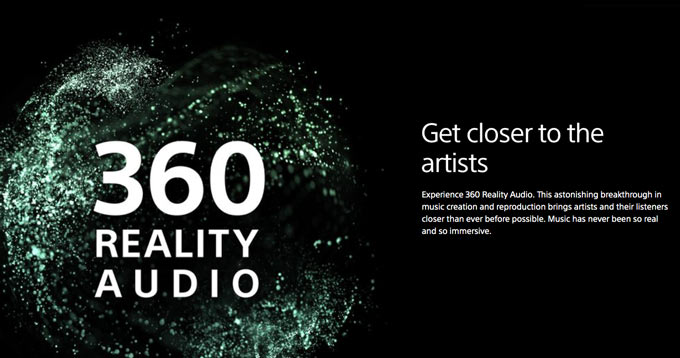
But that was movies. Music had its chance three years later with the introduction of DVD-Audio. The format included losslessly compressed surround sound for the first time using the MLP (Meridian Lossless Packaging) process. Dolby Digital and DTS were simply not good enough for music. The music industry made yet another attempt to market multichannel audio to music consumers. And the results were similar to those early attempts with quadraphonic vinyl — no one seemed to care. Stereo playback is still considered by most audiophiles to be the best way to enjoy recorded music.
AIX Records has embraced and endorsed immersive music since our very first production. And I still believe that listening to a well crafted 5.1 mix of any album is vastly superior to the best stereo I’ve ever heard. The surround remixes of Sgt. Peppers and The White album that came on Blu-ray discs in the 50th anniversary editions are amazing and well worth the expense. Giles Martin and Sam Okell brought new life and expressiveness to those well-known albums. They even did an Atmos mix of Sgt. Pepper in conjunction with Dolby Labs although I’m not sure where or how it was released. I did see a brief video that mentioned a rumored Atmos mix of the 50th anniversary of the Abbey Road album. That could be very interesting.
Sony’s 360 Reality Audio
And now Sony is pushing 360 Reality Audio. During a brief FB chat with a close friend in the UK, he directed me to the Sony site that promotes this new technology. You can check out the site for yourself at 360 Reality Audio. My friend wanted to know if the Sony technology was related to the YARRA 3DX beamforming stuff I’d been involved with a few years back (I’ll be writing about the YARRA 3DX deliveries as soon as I receive mine…they are starting to ship!!). I wrote back that 3D audio is all about what gets to your ears. How an individual technology achieves that is something different. Binaural with head tracking a la the Smyth Brothers’ Realiser is one approach while beamforming without headphones is another. Having multiple speakers in a listening room can also achieve immersive surround music.
The Sony 360 Reality Audio promotional video located at the very top of their page tries to distinguish their object oriented “virtual speaker” approach from traditional stereo and even 5.1|7.1 surround. But as marketing types are prone to do, they deliberately misinform the viewer with statements that are incorrect.
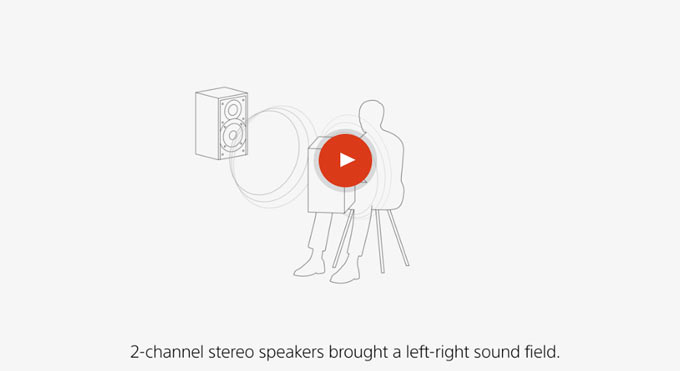
One of those offending statements would have us believe that “2-channel stereo speakers brought a left-right sound field” to music listening. What they fail to mention is that 2-channel stereo includes the ability to locate or “pan” an individual sound to any place between the speakers NOT just the left or right sides. Within a 5.1 surround setup, the possibilities expand to the entire 360 degrees not just the 5 speakers!
What moving to Dolby Atmos in movie theaters or the new SONY 360 Reality Audio technique really means is that “objects of sound” are placed anywhere in the environment without individual speakers being required for each location — sort of the same thing as “phantom center” but with the addition of height information. And it’s accomplished with a specific number of actual speakers. We can debate whether adding elevation information to instruments or voices is desirable in a music mix but what really matters is the resultant listening experience for the consumer. If a completely immersive 360 degree mix can be delivered using a set of headphones, a beamforming sound bar, or array of “virtual speakers” then the task is accomplished.
The real question is whether the public will embrace immersive music as the next big thing. I hope they do. The AIX Records HD-Audio 2017 sampler is a great way to experience different genres in two different surround modes.
The New AIX Records Site Launches
I’ve been spending a lot of my time migrating all of the information and sample tracks from the old AIX Records website to the new site. It’s a rather slow process but so far I’ve got all of the Blu-ray albums set up at the new AIX Records site. It will eventually be located at the correct aixrecords.com URL but the staging site is working on computers, tablets, and smartphones. It’s far simpler than the previous site and will be easier to maintain. And it really works — orders can now be taken!

The plan is to augment the site to include file downloads and perhaps even streaming in the future. For now, I’m pleased that it’s coming together. Any comments or advice on the new site will be very much appreciated. Take a look at the new design…
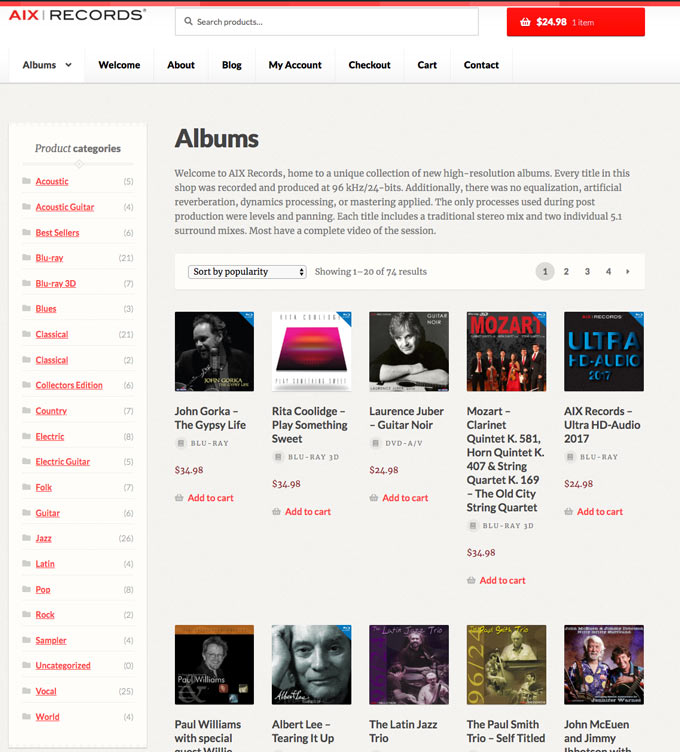
A Favorite Compliment
In my last post, I relished some very positive comments that customers have made over the years. I bumped into my favorite comment this week and wanted to share it with you:
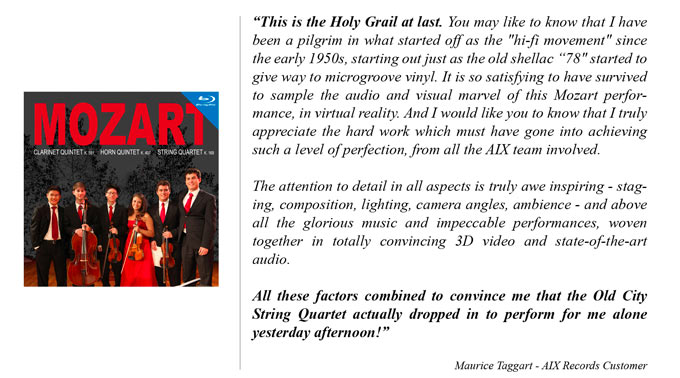
“This is the Holy Grail at last. You may like to know that I have been a pilgrim in what started off as the “hi-fi movement” since the early 1950s, starting out just as the old shellac “78″ started to give way to microgroove vinyl. It is so satisfying to have survived to sample the audio and visual marvel of this Mozart performance, in virtual reality. And I would like you to know that I truly appreciate the hard work which must have gone into achieving such a level of perfection, from all the AIX team involved.
The attention to detail in all aspects is truly awe inspiring – staging, composition, lighting, camera angles, ambience – and above all the glorious music and impeccable performances, woven together in totally convincing 3D video and state-of-the-art audio.
All these factors combined to convince me that the Old City String Quartet actually dropped in to perform for me alone yesterday afternoon!”
Maurice Taggart – AIX Records Customer
Music and Audio at 35% OFF

Don’t forget that the July 4th Special Discount for 35% off the book continues through the end of the month. Use coupon code MAAG190704 during checkout to receive the discount. I’ll gladly include the eBook version at no charge for all new order.
Thanks

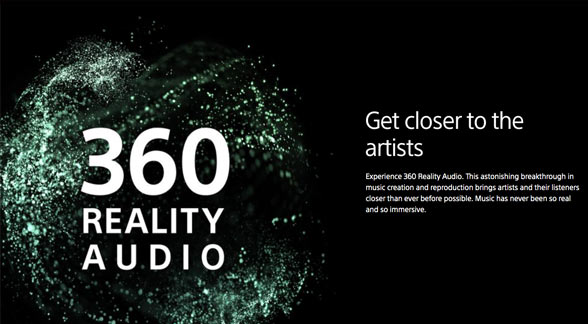
“I’ve been a huge fan of immersive audio for many years.”
Me too. That’s what I expected from quadraphonic sound in 1974. And that’s what I didn’t get. I saw immediately that it wasn’t going to work and set about to figure out why. I thought about how concert halls do it and to different degrees. And I figured out how they worked using my own methods. That was 45 years ago. I also figured out how to build a machine that would do the same thing a different way. It was impossibly complex. I also figured out how to simplify that machine and use it with commercial recordings of all types. My first prototype was working 2 years later. I demonstrated it to a patent attorney and I applied for and got a patent 4,332,979. If you read it ignore figures 1, 2, 3a, and 3b. They relate to a measurement system that is considered a separate art and should have been removed. The first prototype operated successfully in 3 places until 1985 when it was dismantled for the last time. I began work on a second prototype in 2002 based around an infringement on my patent. There’s only one I know of and having warned the manufacturer he nor anyone else ever marketed another like it AFAIK. The device he marketed had two flaws that compromised its performance to where results were mediocre by my standards. It took me until 2008 to figure them out and a workaround to fix them.
Having had no formal training in acoustics I considered that to be my greatest advantage. I was not suck in someone else’s mental rut. I had all of the tools I needed to understand that from my education. The method of solution seems to be unique for this application and there are one or two mathematical tricks I invented. I began studying what experts in the profession had arrived at insofar as concert hall acoustics are concerned. Their method of analysis is broken down into bits and pieces and they try to describe the acoustics of an entire room with one figure of merit for each variable. Mine is only two equations and they describe the relationship between two arbitrary points in space at a time, the sound field at the source of sound and the sound field where it is heard or measured. It breaks them down into component parts and explains how they relate to each other.
The current prototype which will never change works well and can be used for any genre of music but it was developed specifically for classical music. Stereophonic recordings work better than monophonic recordings. With it I can create practically any relationship of variables within the context of the invention and the constraints of this prototype which allow great flexibility of adjusting variables in time, space, and spectral response, including how spectral content changes with time as echoes die out. This is an important factor and is presented as RT as a function of frequency in the standard literature.
The concept assumes the opposite of the audiophile way of thinking that has it that everything that is needed for perfect reproduction is in the recording. This approach assumes most of what is needed is missing and has to be reconstructed from what is available. The result is a true vector field, has a very high diffusivity index both horizontally and vertically.
I had studied some of the papers written by the recently deceased famous acoustician Leo Beranek. Unfortunately his technical papers are no longer available on line for free anymore. In one he explains 10 parameters and measurements for 59 concert halls around the world and in another for 29 opera houses and gives data for all of them. Then he tries to correlate preferences of “golden ears” mostly famous orchestra conductors with the data to find positive correlations and negative correlations. He has another paper that changes the calculation of Listener Envelopment (what audiophiles call immersion) putting greater emphasis on reflections from above and behind the listener than he had previously. He designates it as LE although other texts designate it as LEV.
One of many shortcomings of hi fi systems trying to emulate envelopment is that of diffusivity. Unless you have a vast number of speaker meaning hundreds or even thousands, pointing speakers directly at the listener for the reverberant field won’t work well. If you can hear where the source of reflected sound comes from it’s not good IMO and would be considered a serious acoustic defect in a live performance venue. That’s one one of the goals of the prototypes. Another was to make the effect inescapable in the listening room. Although the sound won’t be exactly the same in any two spots, the effect cannot be escaped. These are two design criteria I have for such a system. Whatever you can buy will not meet those criteria. Neither of the two prototypes cost over $3000 to build.
Next time you are at a live concert put you ear up to a wall. What will you hear coming form that wall? Nothing. You can go anywhere in that room and you will get the same result, from the walls, the ceiling the floor, anything. And yet our science knows that almost anywhere you are in the audience most of what you hear will be overwhelmingly the result of sound reflected off these surfaces, 90 percent of more of it. Now people who try to duplicate that effect will take a extra pair or two of speakers and aim them at you. How could anyone reasonably expect that to work? You don’t have to be sitting on top of one of those speaker to know where its sound is coming from. If you can hear it at all you will know immediately. This is one of the reasons why these systems can’t compete with the kind of envelopment or as audiophiles call it immersion great concert halls can produce. And it’s not just the walls to the side, it’s the ceiling and the walls behind you as well. Even the seats in the audience can play a role as the acoustics of concert halls are different empty from occupied. This alone is sufficient to be a deal breaker flaw for me.
Wave Field Synthesis, a similar concept derived from a different starting point and path often has a horizontal line array 360 degrees around you shoulder to shoulder but that doesn’t produce the required reflections from above. In some demos there are speakers on the ceiling but they are much too sparsely spaced. In EEAS adapted for home use the diffusivity index is improved by having many “surround” speakers around the entire perimeter of the room and baffled in such a way that they are aimed only at the walls and ceiling using the room itself as a diffuser. It creates the same effect by different means. The signals that would have been reflected in the live concert are processed from the recording to have the same relationship to the first arriving signal from the main speakers electronically in a small room as the reflections would have in a large room using a combination of time delays, equalizers, and mixers. The effect can be varied over a wide range and there is no one correct setting for any recording. The optimal settings are therefore a matter of preference which can change at different times. My preferences are based on memories of live music.
The system has to be calibrated to the room, for the equipment being used, and adjusted for each recording. It’s an acquired skill and it’s not easy but IMO it is very effective when done properly.
“I’ve been a huge fan of immersive audio for many years.”
One approach, the one I used is to first figure out how the world’s best concert halls do it for live music. Then figure out another way to do the same thing in your home from a recording. The way I did it took a bit of math, vector, calculus, Fourier transforms, and mapping functions. If you have some knowledge of field theory including EMF fields described by Maxwell’s equations and fluid dynamic fields it helps a lot. Sound is a changing a fluid dynamic field, the fluid in this case being air. There may be other ways to do it but I don’t know what they are or how well they’d work.
You and I have discussed this issue before. You seek something entirely different than I do…and we seek the goals using different technologies.
We have entirely different goals and different ideas but we do have at least one goal in common, the sense of what you call immersion and what acousticians call envelopment. They mean the same thing.That is the topic of this thread. This sensation is a psychoacoustic phenomenon that many listeners to music of all kinds find pleasurable. It is a response to a stimulus of an acoustic field at our ears that our brain interprets. The goal is to figure out what that stimulus has to be, how it is optimized and how to create it from recordings. I don’t think our goals in this respect are different. I didn’t actually set out to achieve this goal, it just happened to be associated with things I did try to achieve for my other goals but it is something that I certainly enjoy and enjoyed experimenting with. If you have any other ideas about how to optimize this phenomenon I’m always open to what other people have to say. If there is any merit to their ideas I will consider it with an open mind. I’m always willing to learn something from other people, even those I ordinarily disagree with. Each idea stands or falls on its own merit.